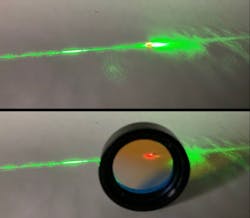Solid State Quantum Magnetometers—Seeking out water worlds from the quantum world
WASHINGTON - “Follow the water!” The solar system is full of water in different states, from the Sun’s water vapor to the ice of Pluto and beyond. Water is not only linked to the possibility to sustain life, it is also interesting for its own geological properties and potential uses. For example, ice on the Moon and Mars could support human exploration. Comets that hit Earth may have deposited water on our planet. The icy comets and rings of Saturn reveal how solar systems change over time, NASA's Science Editorial Team writes. Continue reading original article.
The Military & Aerospace Electronics take:
5 June 2024 - Solid-state quantum magnetometers are a cutting-edge instrument class designed to measure magnetic fields with high sensitivity while maintaining a smaller size, lower weight, and reduced power consumption (SWaP). These devices offer quantum advantages, including self-calibration based on spin-nuclear quantum interactions, which helps compensate for drifts over time—critical for long-duration missions to outer ice-giants. Additionally, solid-state quantum magnetometers exhibit radiation resilience and can withstand extreme temperatures.
These magnetometers utilize quantum color centers found in semiconductors like diamond and silicon carbide. Color centers are defects in the crystal lattice, and their quantum spin properties make them sensitive to environmental magnetic fields. By probing these color centers electrically or optically, we gain insights into magnetic field properties and can even detect the presence of water.
NASA’s Jet Propulsion Laboratory is developing two such magnetometers for space exploration. The SiCMAG (Silicon Carbide Magnetometer) reads spin properties electrically, while the OPuS-MAGNM (optically pumped solid-state quantum magnetometer) leverages optics for even higher sensitivities
Related: Is quantum computing an enabler for the decarbonization of aviation?
Jamie Whitney, Senior Editor
Military + Aerospace Electronics
